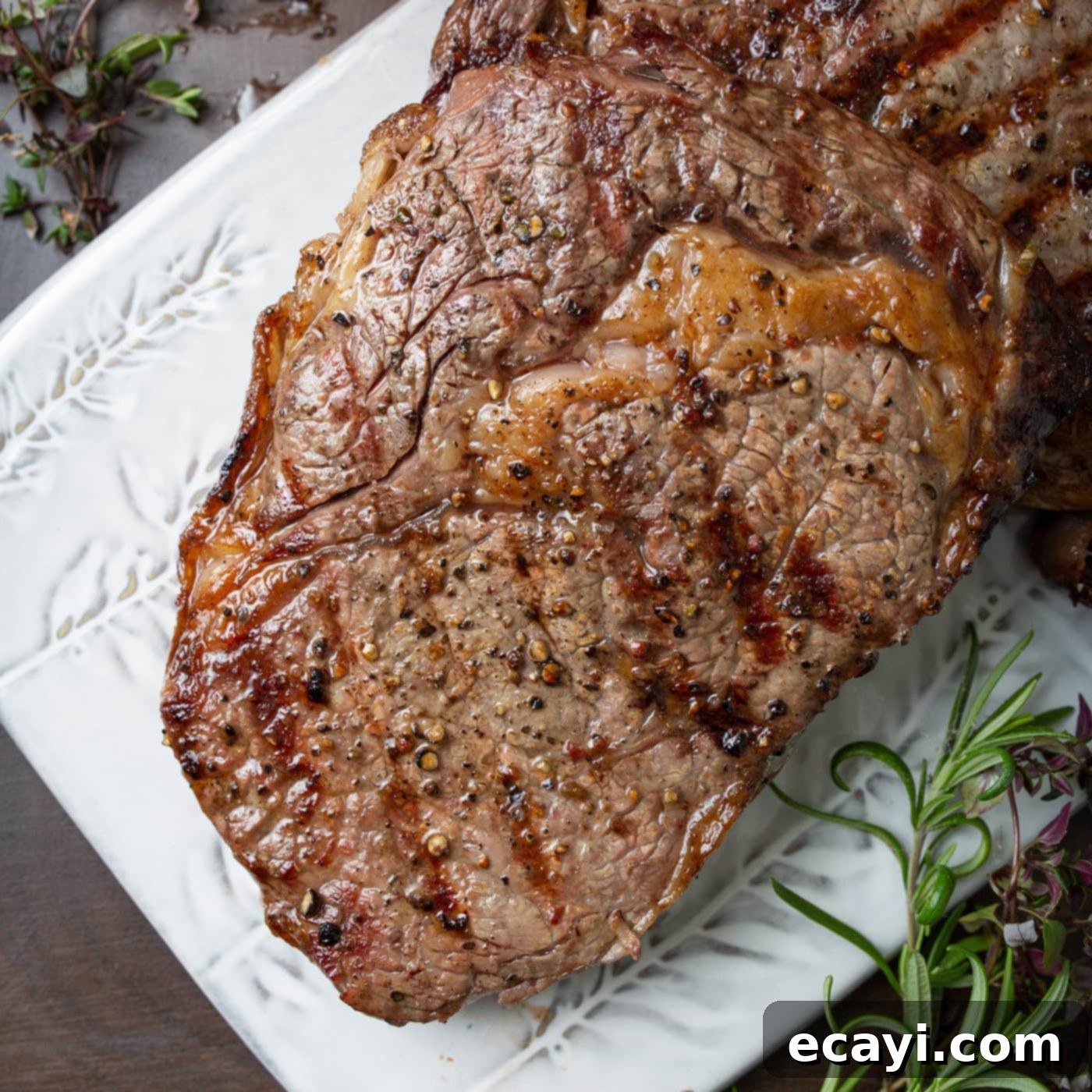How to Grill the Perfect Steak: Your Ultimate Guide to Juicy, Tender Results Every Time
Achieving a truly juicy, tender, and flavorful grilled steak starts with two fundamental elements: selecting a premium cut of meat and employing the correct grilling techniques. This comprehensive guide will walk you through every step, transforming you into a master of the grill and ensuring every steak you cook is nothing short of perfection. Forget steakhouse reservations – with these expert tips, you’ll be grilling restaurant-quality steak right in your backyard.
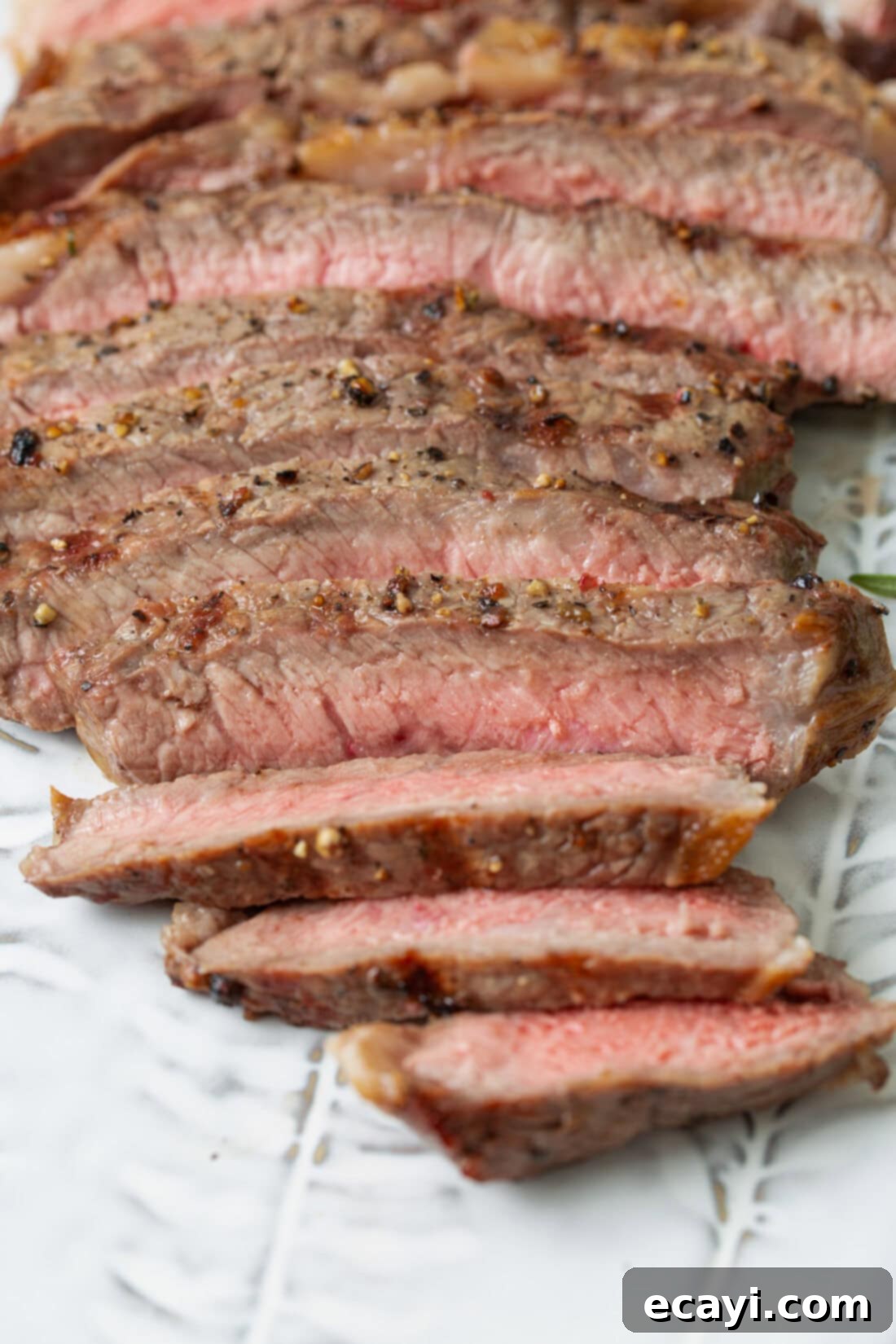
Why This Grilled Steak Recipe Guarantees Perfection
Grilled steak is often considered the pinnacle of culinary delight for meat lovers. The symphony of rich, beefy flavors combined with a melt-in-your-mouth tender texture is a truly unforgettable experience. This particular recipe focuses on cuts renowned in iconic New York steakhouses, like the New York Strip or Ribeye, and demystifies the process of grilling them to absolute perfection. Many home cooks feel intimidated by grilling steak, fearing they might overcook it or fail to achieve that coveted crust and juicy interior. However, with our straightforward tips and precise instructions, you’ll discover that mastering a perfectly grilled steak is not only achievable but also incredibly rewarding and surprisingly simple.
The success of this grilled steak recipe lies in a few critical, yet often overlooked, steps. We don’t just tell you what to do; we explain why each step is important. From preparing your grill properly to understanding the nuances of steak cuts, applying the right seasoning, mastering the sear, and recognizing the importance of resting, we break down each element. We’ll show you how to maximize flavor, achieve an incredible crust (the Maillard reaction!), and ensure your steak is always tender, succulent, and bursting with natural juices. Before you even lay that magnificent piece of meat on the grates, there’s a crucial first step: a clean grill. Just like a chef preps their kitchen, an experienced griller ensures their cooking surface is pristine. If your grill has been resting through the colder months, make sure it’s spotless and ready to deliver that intense, even heat needed for a flawless sear. Learn how to clean your gas grill thoroughly to prevent sticking and ensure optimal performance, setting the stage for the perfect grilled steak.
RELATED: Elevate your steak’s flavor even further with this complementary recipe – Steak Marinade. While this recipe focuses on simple seasoning, a good marinade can add another layer of complexity and tenderness, especially for leaner cuts or if you prefer a different flavor profile.
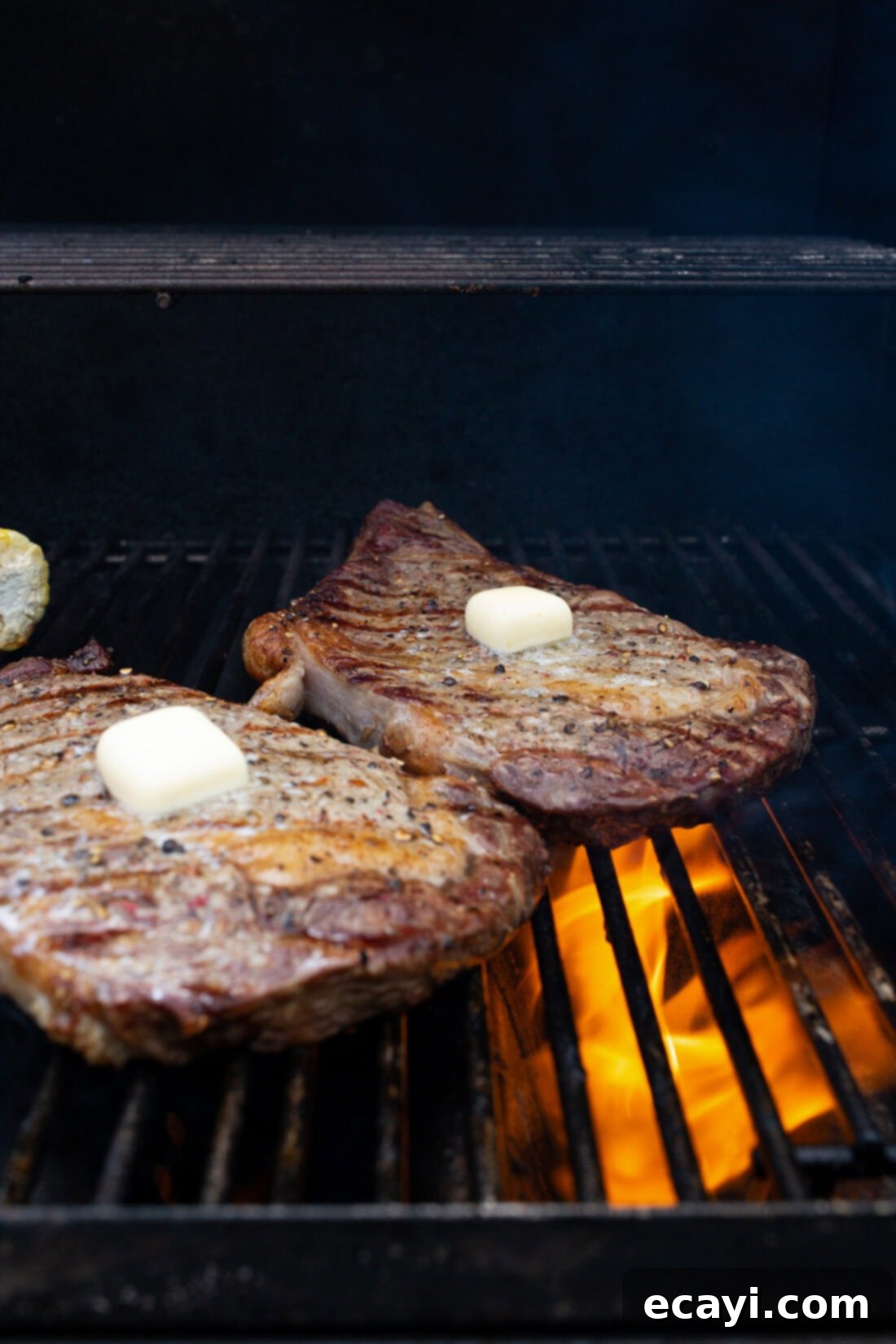
Essential Ingredients for Your Perfectly Grilled Steak
Crafting an exceptional grilled steak requires only a few high-quality ingredients. The star, of course, is the steak itself, complemented by simple seasonings that enhance its natural flavor without overpowering it. Focusing on quality ingredients is key to letting the rich taste of the beef shine through. You can find all specific measurements, detailed ingredients, and step-by-step instructions in the printable recipe card located towards the end of this post.
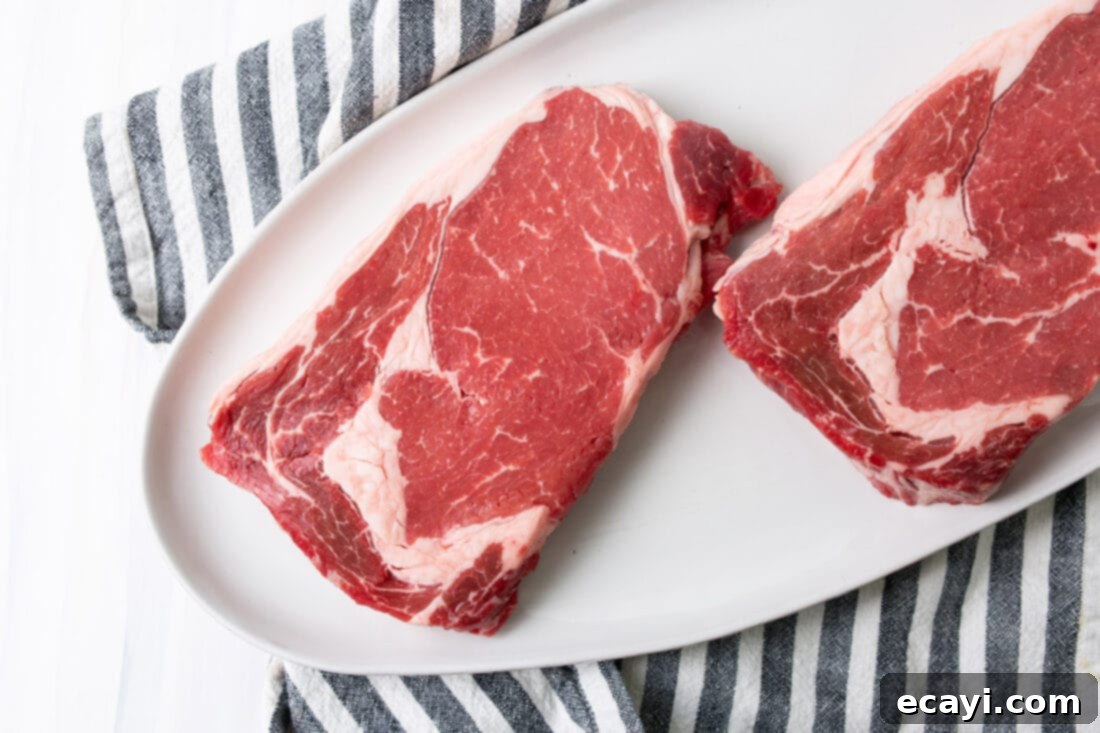
Ingredient Information and Expert Substitution Suggestions
STEAK – The foundation of a great grilled steak is undeniably the quality of the meat itself. When you’re selecting your steak, always prioritize cuts with excellent marbling. Marbling refers to the small flecks and streaks of intramuscular fat dispersed throughout the meat. This fat is absolutely crucial because as the steak cooks, it renders, melting into the muscle fibers, which in turn bastes the meat from within. This internal basting is what creates that incredibly tender, juicy texture and rich, beefy flavor that distinguishes an ordinary steak from an extraordinary one. A thick ribbon of fat along the edge also intensifies the overall flavor profile, adding to the succulence.
For this recipe, we highly recommend using a **New York Strip** or a **Ribeye**. Both are fantastic, popular choices for grilling due to their robust flavor and excellent marbling characteristics:
- New York Strip (also known as Kansas City Strip, Ambassador Steak, Top Loin Steak, or Hotel Cut Steak): This highly regarded cut comes from the short loin area of the cow. It’s well-known for its firm yet fine texture, distinct beefy flavor, and a satisfying chew. It typically has a minimal amount of marbling but often features a notable band of fat along one edge. This fat, when rendered on the grill, bastes the meat and contributes significantly to its flavor and moisture during grilling.
- Ribeye (also known as Delmonico, Scotch Fillet, or Spencer Steak): Cut from the rib section, the Ribeye is universally celebrated for its abundant marbling, which gives it an incredibly rich, buttery flavor and a supremely tender texture. It often features a central “eye” of fat, which renders beautifully as it cooks, enhancing the steak’s succulence and making it exceptionally juicy. For many, the Ribeye is the ultimate grilling steak due to its unparalleled flavor and tenderness.
While these are our top recommendations, other well-suited cuts like Sirloin, T-Bone, or Porterhouse can also be grilled successfully following similar methods. Just remember to adjust cooking times based on their thickness, marbling, and bone-in status. Always aim for steaks that are at least 1 to 1.5 inches thick; thinner steaks cook too quickly and are prone to drying out, making it harder to achieve a good sear without overcooking the interior.
COARSE SALT AND PEPPER – Simple, high-quality seasoning is best to allow the natural, robust flavor of the beef to truly shine. We specifically recommend using coarse salt (like kosher salt or flaky sea salt) and freshly ground black pepper. The larger crystals of coarse salt adhere better to the steak’s surface and initially draw out moisture, which then evaporates, aiding in the development of a beautiful, savory, and crispy crust (the Maillard reaction). Avoid fine table salt, which can quickly over-salt the meat and be absorbed too deeply, leaving the surface drier. A coarse pepper medley can add a touch of complex aromatic flavor, but freshly ground black pepper is perfectly adequate and provides a pleasant pungency.
BUTTER (OPTIONAL, BUT HIGHLY RECOMMENDED) – A pat of unsalted butter added strategically during the grilling process is a secret weapon for an even more decadent and flavorful steak. As the butter melts, it creates a self-basting effect, replacing some of the fat and moisture lost during grilling and infusing the meat with a rich, creamy, and slightly nutty flavor. This technique helps to achieve an even deeper, more golden-brown crust and a wonderfully luxurious mouthfeel. It’s a simple addition that makes a significant difference.
How to Make Perfectly Grilled Steak: Step-by-Step Instructions
These step-by-step photos and detailed instructions are provided to help you visualize each stage of making this recipe. For a convenient printable version of this recipe, complete with precise measurements and comprehensive instructions, please Jump to Recipe at the bottom of this page.
- Bring Steak to Room Temperature: Begin by removing your steak from the refrigerator and allowing it to rest at room temperature for approximately 15 to 30 minutes before grilling. This seemingly small step is crucial for ensuring a more even cook from edge to center, preventing the outside from burning or overcooking before the inside reaches your desired doneness. A cold steak hitting a hot grill will cook unevenly, often resulting in a tough, gray band on the exterior and a cold interior.
- Pat Dry and Season Generously: Using paper towels, thoroughly pat the steak dry on all sides. This step is essential because any surface moisture will steam the meat rather than sear it, preventing that delicious, crispy, flavorful crust from forming. Once completely dry, generously season all sides of the steak with coarse salt and pepper. Don’t be shy with the seasoning; much of it will fall off during grilling, and proper, liberal seasoning is absolutely key to developing deep flavor.
- Preheat Your Grill to High Heat: Preheat your grill to a very high temperature, at least 500°F (260°C). High heat is paramount for searing the steak quickly, locking in its precious juices, and developing that coveted Maillard reaction crust. Once preheated, use a grill brush to clean any residue from the grates. Then, using a brush or a folded paper towel dipped in a high-smoke-point oil (like grapeseed, canola, or avocado oil), carefully oil the grates. This step prevents sticking and helps create those beautiful, professional-looking grill marks.
- Sear the Steak: Carefully lay the seasoned steak down on the intensely preheated, freshly oiled grill grates. Close the grill lid immediately to maintain the high internal temperature. Resist the strong urge to move or touch the steak for the first 3-5 minutes. This initial searing period is vital for forming a rich, flavorful, dark crust on the exterior. Patience here pays off immensely.
- Flip and Butter Baste: After the initial sear (3-5 minutes), open the lid and carefully flip the steak to the uncooked side. On this second side, if desired, place a 1 tablespoon pat of unsalted butter on top of each steak. As the steak continues to cook, the butter will melt, creating a wonderful basting effect that adds incredible richness, flavor, and helps keep the meat exceptionally moist. Close the lid again and cook for another 3-5 minutes, depending on your desired doneness and the steak’s thickness. For a perfect medium-rare, this two-flip method often works wonders.
- Check for Doneness (Using a Meat Thermometer): The most accurate and reliable way to check your steak’s doneness is with an instant-read meat thermometer. Insert the thermometer into the thickest part of the steak, being careful to avoid any bones, which can give an inaccurate reading.
- Rare: 120-125°F (49-52°C) – Characterized by a cool red center.
- Medium-Rare: 130-135°F (54-57°C) – Features a warm red center (this is the recommended doneness for this recipe to enjoy maximum juiciness and flavor).
- Medium: 135-140°F (57-60°C) – Boasts a warm pink center.
- Medium-Well: 140-150°F (60-66°C) – Shows a slightly pink center, moving towards gray.
- Well-Done: 150-160°F (66-71°C) – Exhibits little to no pink, a uniformly gray interior.
Remember that the steak’s internal temperature will continue to rise by 5-10 degrees while it rests off the heat, a phenomenon known as “carryover cooking.” Therefore, always remove your steak from the grill a few degrees below your ultimate target temperature.
- Rest Your Steak: Once cooked to your preferred doneness, promptly remove the steaks from the grill and place them on a clean plate or cutting board. Tent them loosely with aluminum foil and allow them to rest for at least 10 minutes (for thicker cuts, up to 15 minutes). This resting period is absolutely crucial; it allows the muscle fibers to relax and the juices, which have been pushed to the center by the intense heat, to redistribute evenly throughout the entire steak. Skipping this essential step will result in a significant amount of flavorful juices running onto your plate, leaving you with a drier, less flavorful steak.
- Slice Against the Grain: For maximum tenderness and an optimal eating experience, always slice your grilled steak against the grain. The grain refers to the direction of the muscle fibers within the meat. By cutting perpendicularly to these fibers, you effectively shorten them, making each bite significantly more tender, easier to chew, and more enjoyable.
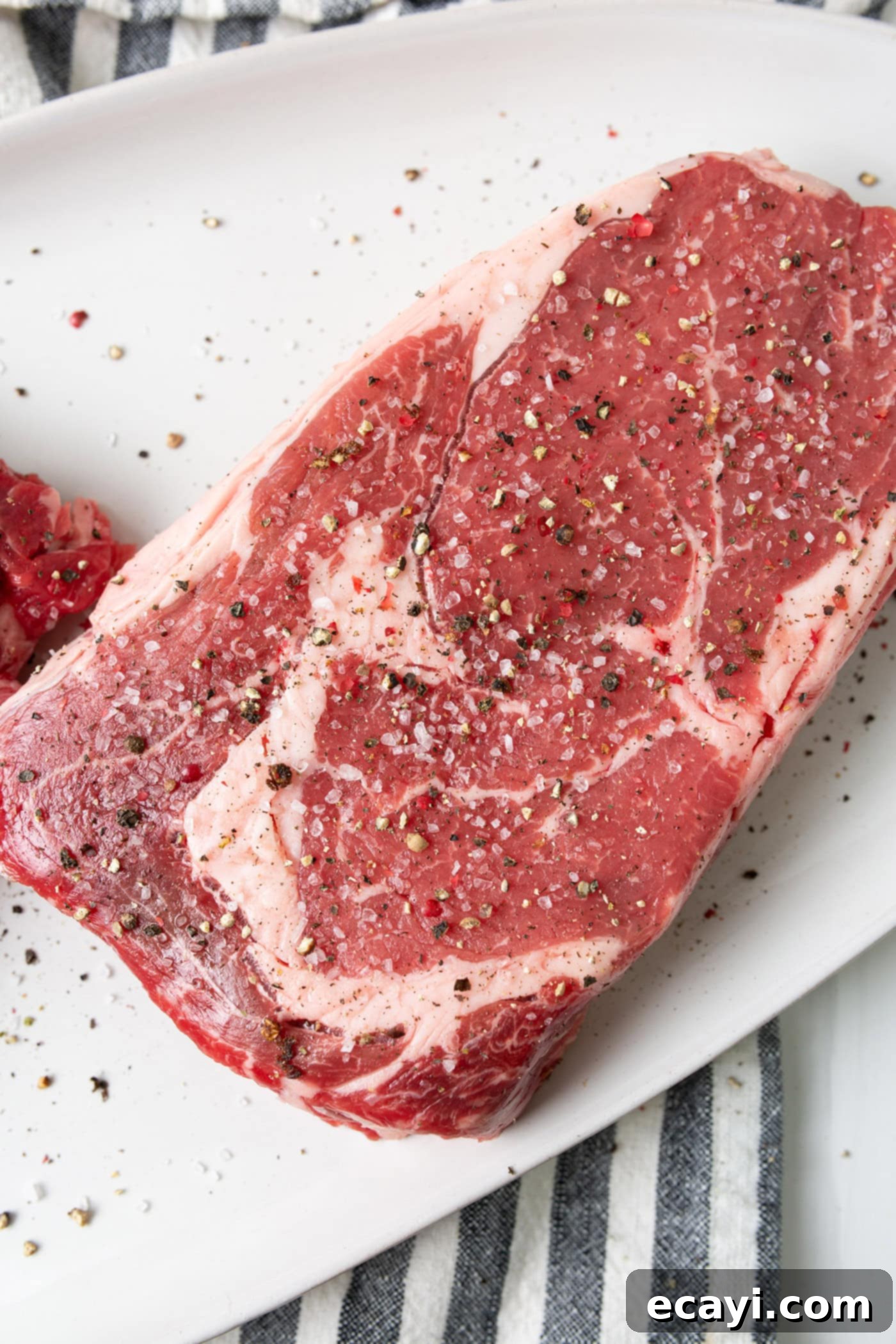
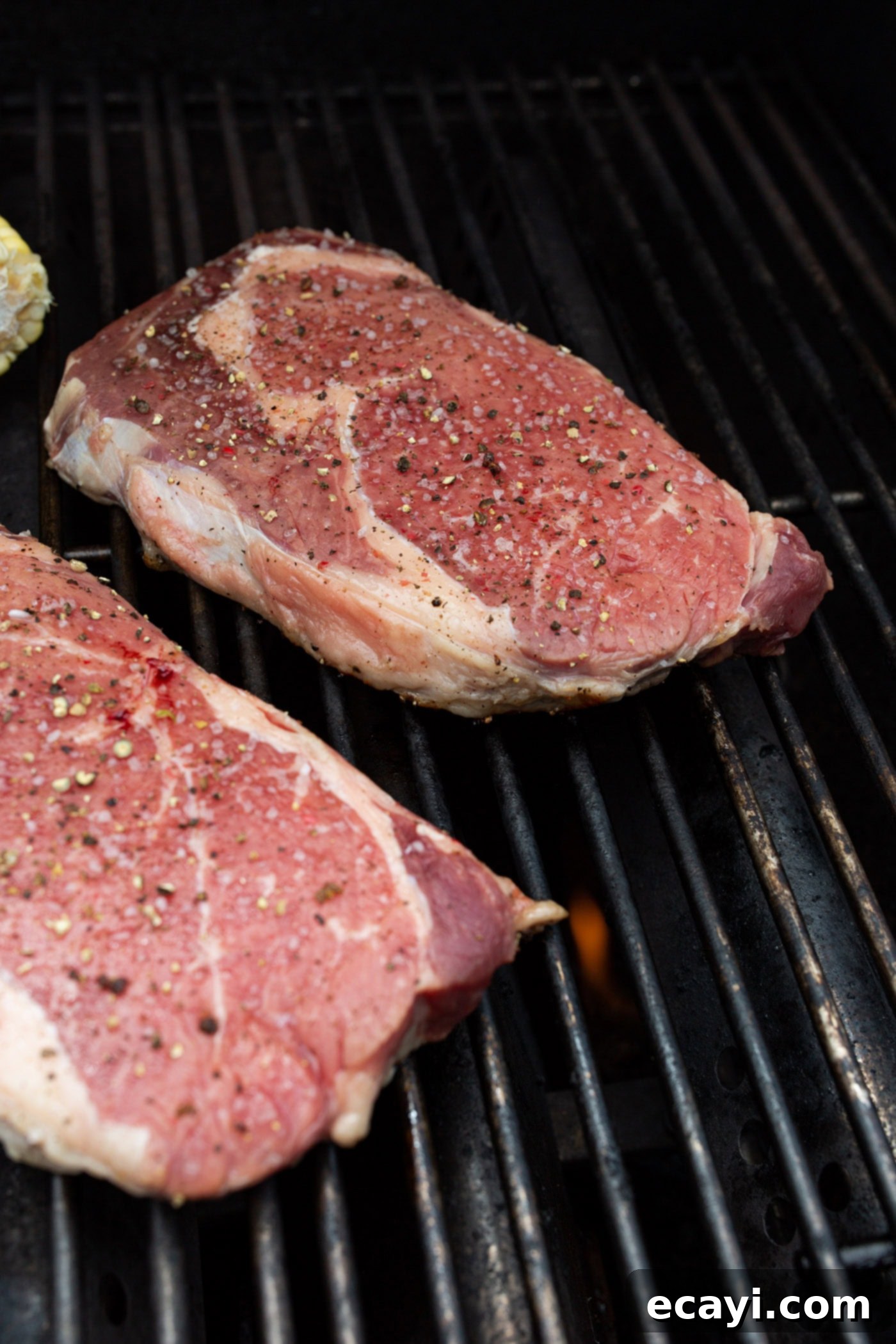
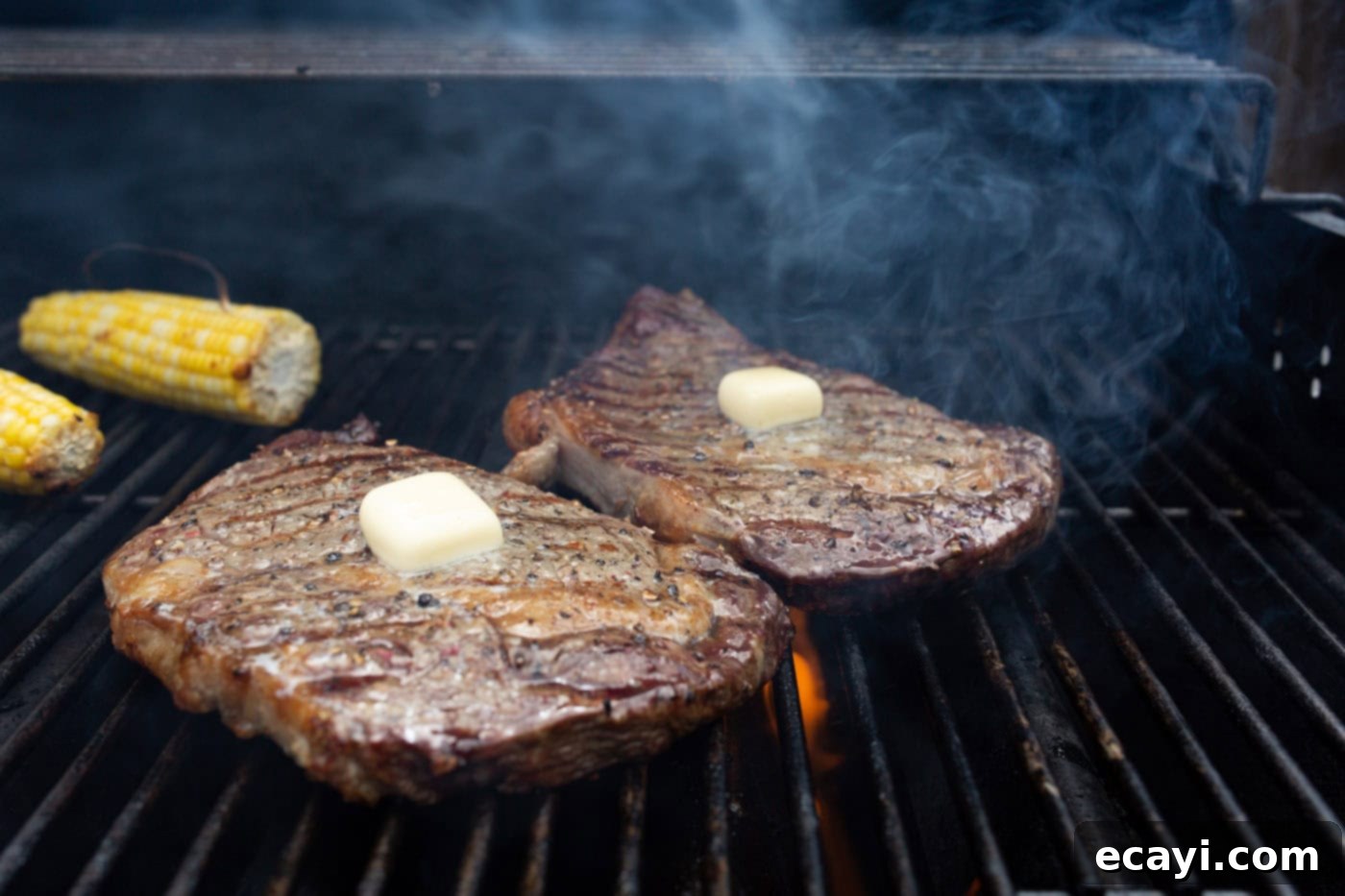
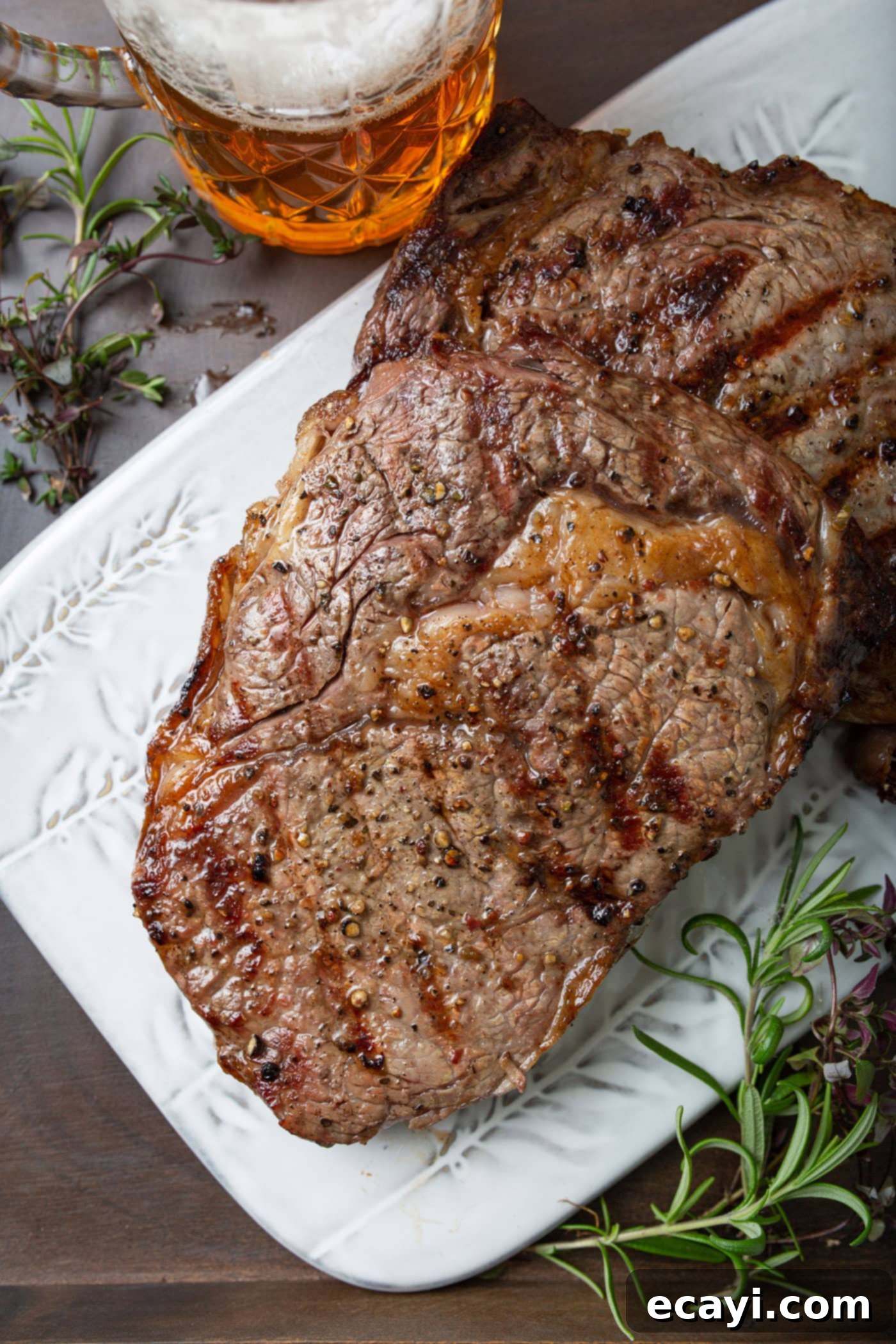
Frequently Asked Questions & Expert Tips for Grilling Steak
The New York Strip steak is a highly prized cut of beef, typically boneless, sourced from the short loin area of the cow, specifically adjacent to the tenderloin. This location contributes to its excellent balance of tenderness and robust, rich beefy flavor. It’s identifiable by its fine grain and often has a generous fat cap on one side, which crisps up beautifully on the grill and adds to the overall taste profile. Its firmness allows it to hold up well to high-heat grilling, making it a favorite for many. You might encounter this versatile cut under several other names, including Kansas City Steak, Country Club Steak, Hotel Cut Steak, Top Loin Steak, or Ambassador Steak, all referring to the same delicious steakhouse favorite.
The Ribeye steak is another exceptional boneless cut, renowned for its incredible tenderness and rich flavor, and it’s expertly sliced from the beef rib primal section. What truly sets the Ribeye apart and makes it so beloved is its superior marbling – the intricate network of intramuscular fat that melts during cooking, infusing the meat with a buttery texture and deep, beefy taste. This abundant fat not only ensures a tender result but also provides a succulent juiciness that makes it a favorite among steak connoisseurs. The fat helps to keep the meat incredibly moist and flavorful throughout the grilling process, offering a truly indulgent experience.
While an instant-read thermometer is the most accurate and recommended tool, you can estimate doneness using the “touch test.” Gently press the center of the steak with your finger or tongs and compare the feel to the fleshy part of your palm:
- Rare: Feels very soft and squishy, like the fleshy part of your palm below your thumb when your hand is open and relaxed.
- Medium-Rare: Feels soft but with a slight springiness, similar to pressing the fleshy part of your palm when your thumb and index finger are lightly touching.
- Medium: Feels firmer, but still has some give, comparable to pressing your palm when your thumb touches your middle finger.
- Medium-Well: Feels quite firm with minimal give, like pressing your palm when your thumb touches your ring finger.
- Well-Done: Feels very firm, almost hard, with no give, similar to pressing your palm when your thumb touches your pinky finger.
Practice is key with this method, so always err on the side of undercooking, as you can always cook it longer if needed.
Both gas and charcoal grills can produce an excellent grilled steak, but they offer distinct advantages and flavor profiles.
- Charcoal Grills: Often favored by purists for the unique smoky flavor it imparts, which is difficult to replicate. The intense, radiant heat from charcoal can create an incredible, dark crust, adding another layer of complexity to your steak. It requires a bit more effort to set up, manage temperature, and clean.
- Gas Grills: Offer unparalleled convenience, quick heating, and precise temperature control, making them ideal for consistent results and busy weeknights. While they may lack the deep smoky essence of charcoal (unless wood chips are added), you can still achieve a fantastic sear and a juicy interior. Many gas grills also allow for easier two-zone grilling, which can be highly beneficial for thicker steaks.
Ultimately, the “better” grill is the one you are most comfortable and confident using to achieve the high, even heat necessary for a perfectly grilled steak.
Expert Grilling Tips:
- Consider Reverse Searing for Thick Steaks: For steaks thicker than 1.5 inches, the reverse searing method can be a game-changer. Cook the steak slowly over indirect heat until it’s about 10-15 degrees below your target internal temperature, then transfer it to very high direct heat for a quick, intense sear on all sides. This method ensures exceptionally even doneness throughout the steak and a perfect, crispy crust.
- Don’t Overcrowd the Grill: Always cook steaks in batches if necessary to avoid overcrowding the grill grates. Too many steaks at once will drastically lower the grate temperature, leading to steaming instead of searing, which results in a less flavorful crust and a less appealing texture.
- Clean Grates are Happy Grates: Always start with spotlessly clean grill grates. This prevents sticking, ensures even heat distribution, and helps create those desirable, sharp grill marks. Use a sturdy wire brush before and after grilling.
- Manage Flare-Ups: Keep a spray bottle of water nearby. If fats drip and cause flare-ups that threaten to char your steak, a quick spritz can extinguish the flames without affecting the cooking process too much.
- Pre-Seasoning Time: For an even deeper flavor, consider seasoning your steak with coarse salt at least an hour before grilling, or even overnight in the refrigerator (patting dry again before grilling). This dry brining helps the salt penetrate the meat more deeply.
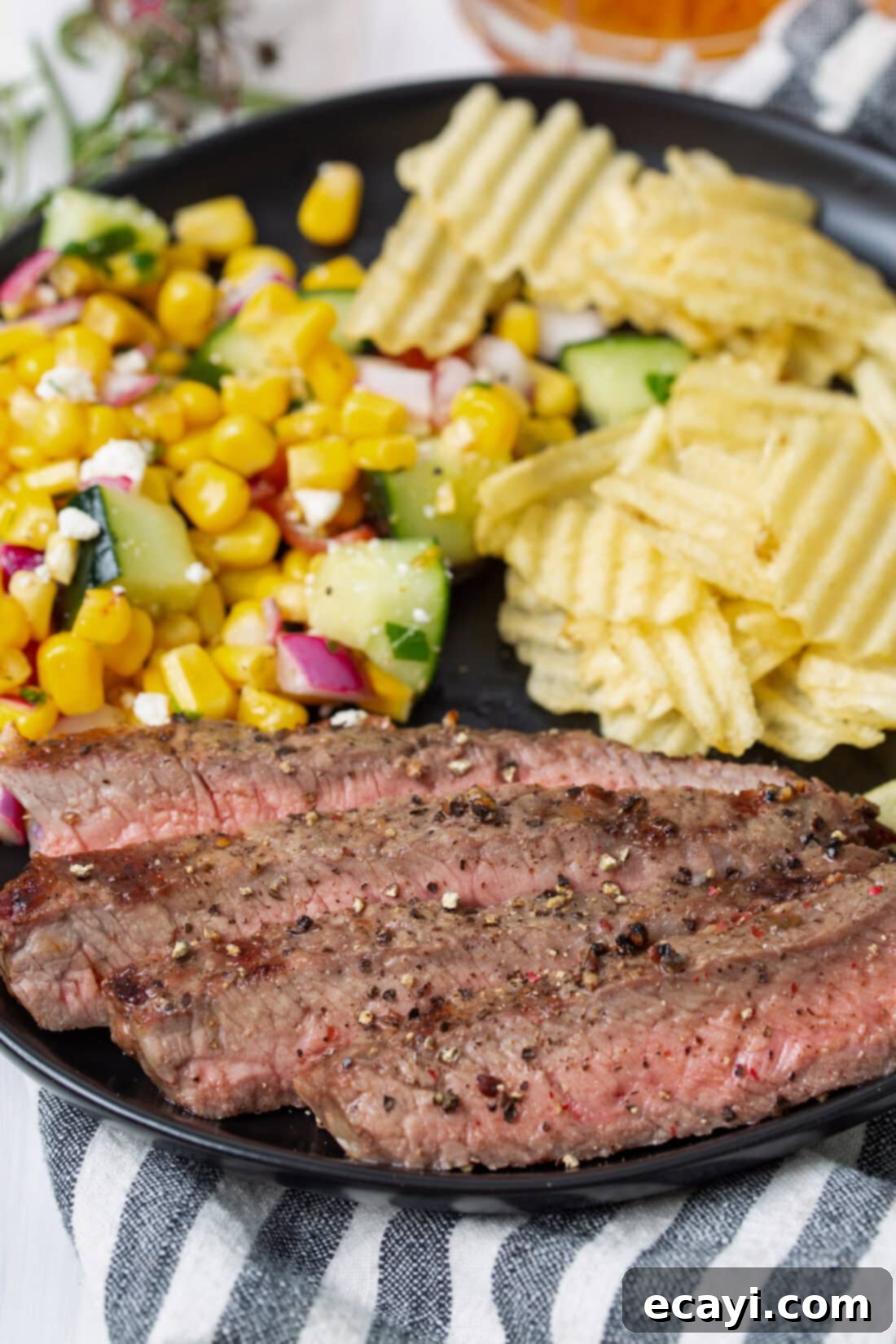
Delicious Serving Suggestions for Your Grilled Steak
A perfectly grilled steak is a versatile main course that pairs wonderfully with a myriad of side dishes, making it suitable for any occasion, from a casual weeknight dinner to an elegant backyard feast. While it’s most commonly served medium or medium-rare to highlight its inherent tenderness and rich flavor, feel free to cook it to your preferred doneness, even rare or well-done. Here are some delectable pairing ideas to complete and enhance your meal:
- Classic Comfort: For a truly satisfying experience, serve your steak with creamy, traditional mashed potatoes, rich twice baked potatoes, or crispy french fries. The comforting richness of the potatoes complements the savory beef perfectly.
- Fresh & Healthy: Balance the richness of the steak with vibrant roasted or grilled vegetables. Asparagus, broccoli, bell peppers, zucchini, or even simple green beans with garlic provide a fresh, healthy contrast. A crisp green salad with a light vinaigrette also makes an excellent accompaniment, especially if you slice the steak thinly and place it artfully atop the greens for a hearty steak salad.
- Hearty Sides: Consider serving with grilled corn on the cob (perhaps with chili lime butter), a warm quinoa salad with herbs, or a generous side of sautéed mushrooms and caramelized onions for added umami and depth of flavor. A baked potato with all the fixings is also always a crowd-pleaser.
- Sauces: While a perfectly grilled steak often needs no adornment, a simple pan sauce made from the resting juices, a vibrant and zesty chimichurri, a classic béarnaise, a peppercorn sauce, or even just a generous pat of compound herb butter (garlic-herb, blue cheese, etc.) can elevate the experience further, adding a burst of complementary flavor.
No matter how you choose to serve it, a perfectly grilled steak prepared with these tips is sure to be the star of your meal and leave a lasting impression.
Explore More Delicious Grill Recipes
If you’ve enjoyed mastering the art of grilling steak and are looking to expand your outdoor cooking repertoire, we invite you to explore more of our fantastic grilling recipes. Fire up your grill again and try these other crowd-pleasing options:
- Grilled Shrimp
- Grilled Salmon
- Grilled Pork Chops
- Grilled Corn on the Cob
- Making Pizza on the Grill
- Grilled Chicken in Garlic Marinade
I love to bake and cook and share my kitchen experience with all of you! Remembering to come back each day can be tough, that’s why I offer a convenient newsletter every time a new recipe posts. Simply subscribe and start receiving your free daily recipes, delivered right to your inbox, so you never miss a delicious meal idea!
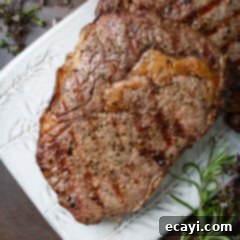
Grilled Steak
IMPORTANT – There are often Frequently Asked Questions within the blog post that you may find helpful. Simply scroll back up to read them!
Print It
Pin It
Rate It
Save ItSaved!
Ingredients
- 2 lbs New York Strip or Ribeye steak 2 steaks, about 1 lb each at 1 1/2 inches thick
- 1 Tbsp coarse salt
- 2 tsp coarse pepper medley or freshly ground black pepper
- 2 Tbsp butter optional
Things You’ll Need
-
Grill
-
Tongs
Before You Begin
- New York Strip Steak and Ribeye are commonly served medium to medium rare to maximize flavor and tenderness, but you may cook it however you’d like. Always use a meat thermometer for the most accurate doneness.
- Always ensure your grill grates are meticulously clean and well-oiled before placing the steak to prevent sticking and promote a beautiful, even sear.
Instructions
-
Allow the steak to come to room temperature for 15-30 minutes. This helps ensure even cooking.
-
Pat the steak dry with paper towels on all sides and season generously with coarse salt and pepper.
-
Preheat your grill to at least 500F (260°C). Once hot, oil the grates to prevent sticking.
-
Place the steak on the preheated grill and close the lid. Do not move or touch the steak for 3-5 minutes to achieve a perfect sear.
-
Flip the steak. On this second side, add 1 Tablespoon of butter to the top of each steak (if using). Continue grilling for another 3-5 minutes for medium-rare, or until desired internal temperature is reached (refer to doneness guide in post).
-
Remove the steak from the grill and allow it to rest on a clean plate or cutting board for 10 minutes. This allows juices to redistribute, ensuring a tender and juicy result.
-
Slice the steak against the grain before serving for maximum tenderness.
Nutrition
The recipes on this blog are tested with a conventional gas oven and gas stovetop. It’s important to note that some ovens, especially as they age, can cook and bake inconsistently. Using an inexpensive oven thermometer can assure you that your oven is truly heating to the proper temperature. If you use a toaster oven or countertop oven, please keep in mind that they may not distribute heat the same as a conventional full sized oven and you may need to adjust your cooking/baking times. In the case of recipes made with a pressure cooker, air fryer, slow cooker, or other appliance, a link to the appliances we use is listed within each respective recipe. For baking recipes where measurements are given by weight, please note that results may not be the same if cups are used instead, and we can’t guarantee success with that method.
This post was originally published here on July 8, 2021.
